'It's one-of-a-kind experience': 'Heeramandi' creator Sanjay Bhansali on why series is a must-watch
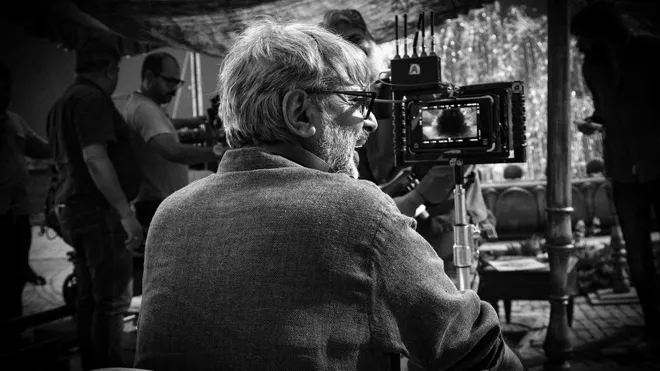
Sanjay Leela Bhansali has always done things larger than life. One look at his films or even a trailer and you would know that the filmmaker likes to go all out with his projects.
But Heeramandi remains his grandest project to date. It took him 18 years from the moment Moin Beig handed him the script to when it finally made its way to Netflix. Bhansali would not have done in any other way.
"When I read Moin Beig's 25 Pages called 'Heeramandi', I was fascinated by the world," Bhansali tells USA TODAY over Zoom from Los Angeles, where Netflix has arranged a special screening of the series. "We've not seen this world. This world does not exist anymore."
The filmmaker said that each character from the series captivated him, and he found each one of them to be "beautiful, charming women."
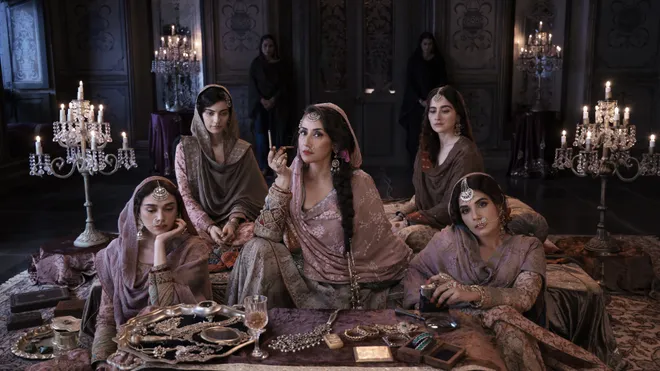
Courtesans and tawaifs are a recurring theme in Bhansali's projects from Chandramukhi (played by Madhuri Dixit) in "Devdas" to Gangubai (played by Alia Bhatt) in "Gangubai Kathiawadi". So, what made him want to make an eight-episode series on a subject that he has previously worked on?
"I was fascinated by these characters," said Bhansali. "And I found them to be such beautiful, charming women. They were so educated. They knew the art of conversations. They were artists."
The filmmaker said that he was intrigued by their way of living - the way they interacted with one another, the power play between them, the way they controlled the nawabs (royal men) and how they survived.
"These courtesans needed to be celebrated," Bhansali said. "A lot of my films talk about these women. These women who have been deprived of their dignity, their rights. Sometimes they're only looked at as beautiful objects, but not wanting to know that how wonderful their minds were or how intelligent they were. How stylish they were. How important they were."
However, none of the characters have been inspired by real-life people, said Bhansali, adding that Beig did borrow inspiration from people he met in Heeramandi on his travels to Lahore, often meshing different people into one character.
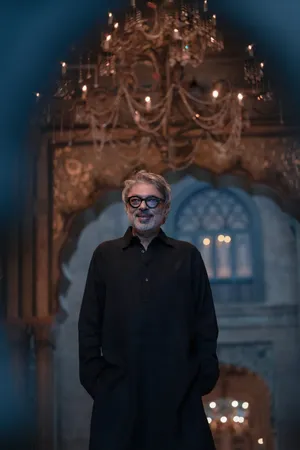
'Epic saga of love, power, betrayal':Release date, cast, where to watch 'Heeramandi: The Diamond Bazaar'
An homage to Heeramandi
Located in the historical city of Lahore, in present-day Pakistan, Heeramandi was once a hub for performing arts, culture, music, poetry, dances, etiquette and poise, so much so that royal families would send their children to learn art and etiquette from the courtesans there. Much like the Geishas in Japan, courtesans from Heeramandi were revered and were viewed as a status symbol, gracing elite parties with their presence. After the British colonized India, Heeramandi gradually transformed into a red-light district with prostitution replacing cultural activities. It was eventually closed down by the Government of Pakistan in the 2010s.
Bhansali feels that the current generations are unaware of what a "special place" Heeramandi was and wanted to pay a homage to the place and people who lived there, especially in light of how the area is now associated with vulgarity and sex only.
"Heeramandi was a very special place," Bhansali said. "It was a place of arts, culture. It was a place of etiquettes. It was a place of artists."
The filmmaker felt that it was important to tell this story and educate the current generation on this culture that existed in undivided India back then and he wanted to do it tastefully in a dignified manner.
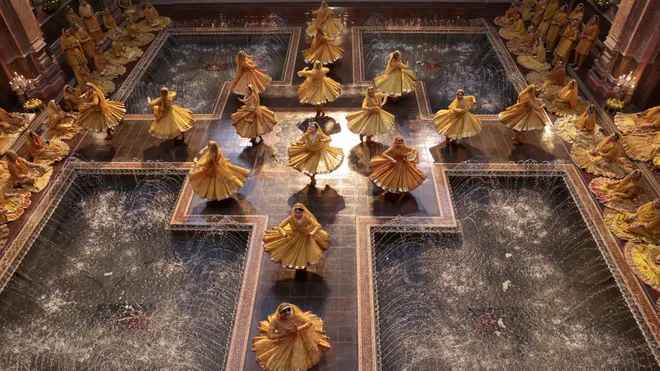
While the filmmaker's project is set in Lahore, he himself has never visited the city.
"I wanted to, but I couldn't do it," Bhansali said. "It's a fascinating city and I'd love to go there because people over there really love my work and they give me a lot of love, but I have not been able to visit unfortunately."
As a result, the series' visuals and sets are more of an amalgamation of references and research that Bhansali and his production team found from the internet and Beig's notes than actual reality.
"I took a lot of Lahore from his [Beig] point of view, from his mind and the rest was to my imagination," Bhansali said. "I imagined and created a world that would somehow feel like the real Lahore. I keep saying, I'm a whole soul. I may have traveled those places at some point in my previous birth. I don't know, I somehow know these places deep down."
He added: "So, I resorted to using my own imagination, more than actually visiting Lahore and seeing it."
Finalizing the cast took 6-8 months
Once the project was locked, the next step was finalizing the cast. For a project that has gone on for as long as this, it is natural that the many names would have been considered for the project. Some even made it to the news and headlines.
"Normally all the films that I make, are with me for 8 years, 10 years as an idea," Bhansali said. "I live with the idea, and I develop it more. I live with the characters. I talk to them, create a lot of conversation of myself with the characters."
In this case, it was 18 years and over that time the cast changed, said Bhansali, adding that the project was first started as a film.
Many actors such as Rekha, Madhuri Dixit, Kareena Kapoor Khan, Fawad Khan, Mahira Khan and Imran Abbas were on Bhansali's wish list, but when it finally came down to naming the cast, Bhansali picked Manisha Koraila, with whom he had worked on his first film "Khamoshi."
"She is a little less seen, she's a little less exposed today," Bhansali said. "She had never played a courtesan first and she's an extremely beautiful, intelligent woman to be able to. Then I said Mallikajan would be fantastic with her."
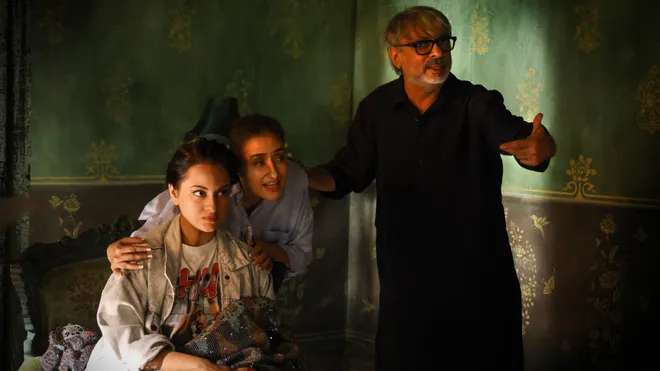
As for Mallikajan's archnemeses Fareedan, Bhansali chose Sonakshi Sinha.
"Sonakshi is someone I've have been wanting to work (with) for a long time because she has such an aura. She is so beautiful and extremely talented. Those eyes speak volumes and she's really the star that I would say has the aura of a big star."
It took Bhansali about 6 to 8 months to finalize the cast and the meticulous filmmaker is satisfied with the results.
"I just got the perfect casting in terms of not being overexposed and willing to work for so many days. We shot for 350 days, and they had to come every day [and] get ready, dressed for almost 2-3 hours," Bhansali said. "So, it was a lot of hard work and a lot of commitment. I'm grateful to these actors that they've done it."
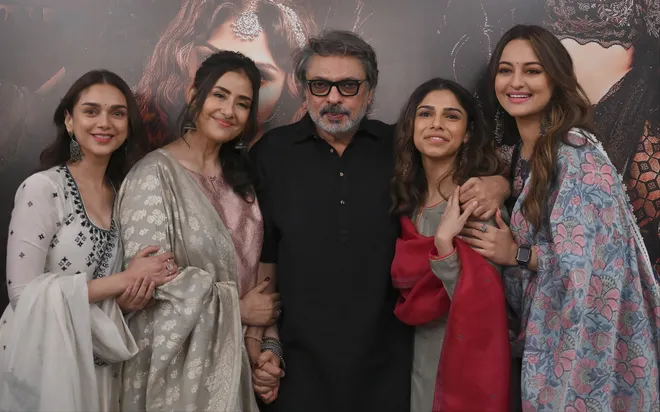
An extravagant affair
The Vice President of Netflix India Monika Shergill, in a statement said that the series is Netflix's "grandest endeavor yet."
Bhansali said that no expense was spared when it came to the series' production. The sets were built on a grand scale, spanning an area of 3-acres at a studio in Mumbai, with chandeliers, fountains and hand-embroidered panels. Furniture was sourced from antique shops across India. The costumes, designed by Rimple and Harpreet, were hand-crafted and elaborately done. In fact, Bhansali confessed that he had the designers make the same costumers multiple times because of various issues.
Ensuring that everything was as perfect as it could be also caused production delays and Bhansali is grateful to his team and actors for their patience.
"You see I wanted to give everything to this show," Bhansali said. "It had to be perfect. I would never make a show like this at this scale ever again in my life. We owe that to the people, to the audience to give them the best."
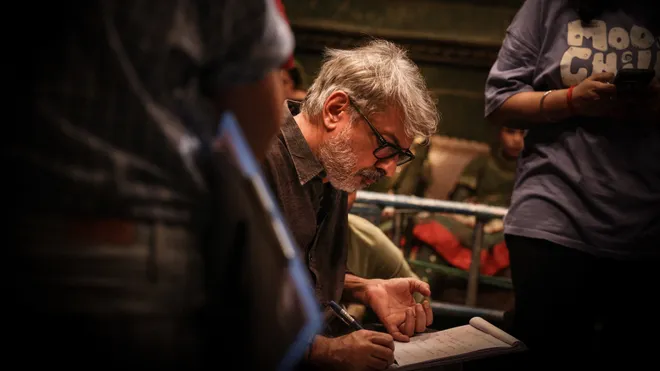
In many of the scenes, the actors even wore original jewelry and for that the security was heightened with guards standing outside the sets and wardrobe department to ensure their safety, shared Bhansali.
Bhansali said that if he could, he would have probably liked to take the whole set home with him.
The filmmaker shared that he spent two days before the set was taken down wandering around it and soaking it all in and reminiscing all the time he spent there making the show - all the songs, the dances, the lighting, the chaos - "and the joy and exuberance of the set."
And when the set finally came down, he felt like Heeramandi was actually closing down.
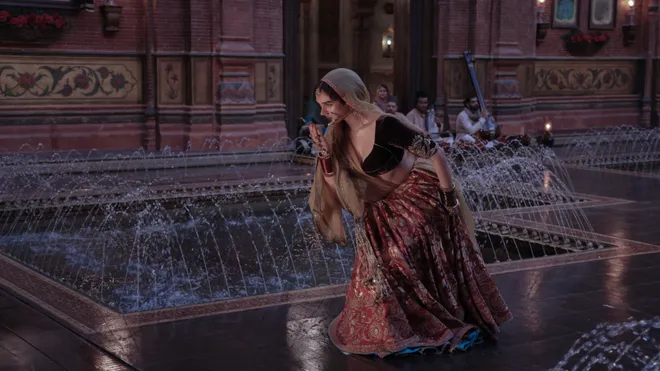
'It needed that scale'
"Heeramandi" is Bhansali's first foray in the world of streaming the OTT platforms. Given the grandiosity of this project, one would assume that it would release as a film on the big screen. And Bhansali tried.
"I feel that was too vast a subject," Bhansali said. "When I tried to make it as a few years ago, I realized I would not be able to continue it into a two-hour film or three. I would not be able to justice to the canvas, to all these characters and the wonderful lives that they lived."
"So, it was important that it'd be done episode wise, so that you get the time to nicely develop the characters, to take their trajectory, to culminate the right point of the right way. You needed the time. It needed that scale."
Bhansali joked that audiences nowadays watch his big-screen projects such as "Devdas" and "Padmaavat" on their mobile devices, so the lines between the different mediums have gotten a little blurred.
However, he is confident that audiences will be able to gauge the scale and grandeur of production even on their mobile devices.
Another advantage of releasing the series on Netflix is the reach. Had the film released in cinemas, it might not have been able to tap into multiple audiences and travel to so many different countries across the world, said Bhansali.
How to watch 'Heeramandi'
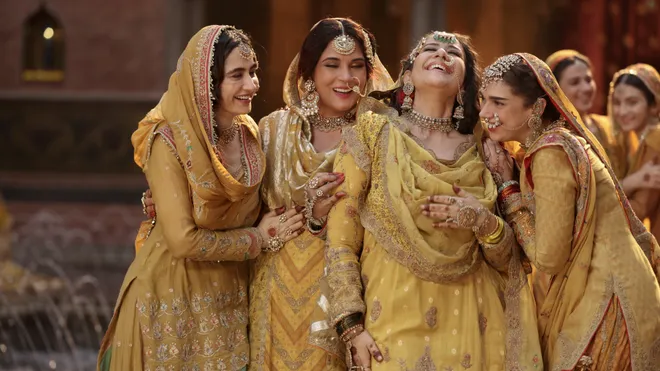
'Heeramandi: The Diamond Market' is now streaming on Netflix. It is also available in English with subtitles.
Saman Shafiq is a trending news reporter for USA TODAY. Reach her at sshafiq@gannett.com and follow her on X @saman_shafiq7.
Disclaimer: The copyright of this article belongs to the original author. Reposting this article is solely for the purpose of information dissemination and does not constitute any investment advice. If there is any infringement, please contact us immediately. We will make corrections or deletions as necessary. Thank you.







